The clouded leopard is a medium-sized wild cat not directly related to regular leopards.
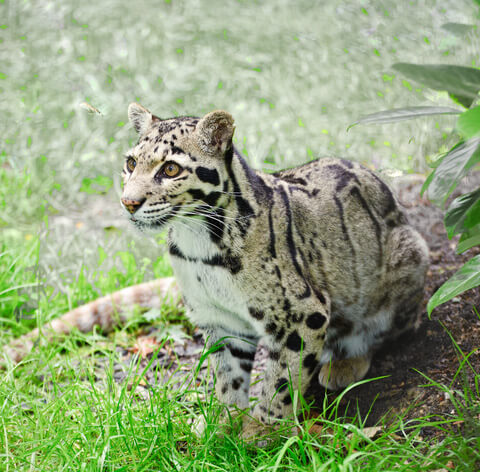
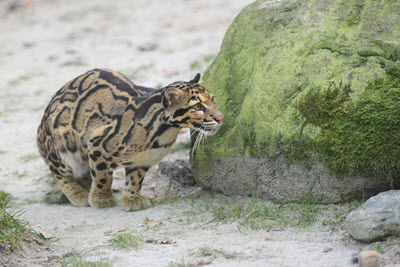
Scientific Name: Neofelis nebulosa
Conservation Status: Vulnerable, declining population
Subspecies: None
Lineage: The clouded leopard is a member of the Panthera lineage, which is made up of two genus and six additional species – the lion, tiger, leopard, jaguar, Sunda clouded leopard and snow leopard.
Meaning of the name: “Clouded” refers to how the spots look on the cat’s fur. Leopard is a compound word meaning “lion” and “panther.”
Population: Fewer than 10,000 adult clouded leopard cats are believed to still live in the wild, and their population is declining.
Amazing clouded leopard facts
- Relative to the size of its body, the most prolonged teeth of all the wild cats.
- Considered the best climber of all the big and small cats, even though they usually hunt on the ground.
- Using their paws and sharp claws, they can hang upside down.
- The clouded leopard is the state animal of Meghalaya, India. The name Meghalaya means “the abode of clouds” in Sanskrit.
- A male clouded leopard mates with several female clouded leopards.
- The can open their mouths incredibly wide – approximatley 100 degrees.
- Even though the clouded leopard is a member of the Panthera subfamily like lions and tigers, they do not roar.
- Can climb down trees head first
More about the clouded leopard
Origin and history
The clouded leopard is a mainland wild cat. According to various studies, it seperated from the Pantherinae famly over 6 million years ago. It is believed the clouded leopard migrated from mainland Asia to Boreno and Sumatra. Today the clouded leopard is classified as Neofelis, one of two Pantherinae genus.
Physical appearance
The clouded leopard is a short, sturdy cat that weighs between 25 and 51 lbs. Their body length is between 27 and 30 inches, with a tail an additional 24 to 32 inches long. Males are larger than females. The cat’s fur can range from pale yellow to grey or brown. Large cloud-looking spots cover the cat’s body, with smaller spots on the cat’s head and tail. Dark bands run from the corner of the cat’s eyes to its cheeks and down around its neck and shoulders. The cat is known for their extremely long teeth. Compared to its body size, the clouded leopard’s teeth are the longest of all the big cats. They also have huge paws.
Location and habitat
Clouded leopards can be found in India, Nepal, Bhutan, Bangladesh, Myanmar, Thailand, Peninsular Malaysia, Indochina, and China south of the Yangtze River. However, the cat is rarely seen in the wild.
Clouded leopard behavior
Clouded leopards communicate with sounds such as hissing, growling, moaning, snorting, and mewing.
Hunting and food
Clouded leopards are adept climbers and can even hang down from branches using only their tails and back paws for support. They can also climb on branches horizontally with their back to the ground. The leopards prey on porcupines, primates, pigs, cattle, goats, squirrels, deer, anteaters, and pheasants.
Reproduction and lifespan
Leopards begin mating around two years of age. A male will mate with the female several times over days, leaving the female to raise the kittens independently. Litters usually average three kittens with a range of 1 to 5. The spots on a newborn cub are completely solid. It is believed the kittens separate from their mother at around ten months of age. Males develop faster than females. Captive clouded leopards have lived as long as 17 years.
Clouded Leopard Conservation Issues
Loss of habitat from deforestation, along with poaching and wildlife trade, is one of the leading conservation issues for the leopard. Although the clouded leopard is legally protected in many regions, hunting bans are poorly enforced. It takes 25 clouded leopards to make one clouded leopard fur coat. The Rukai, one of Taiwan’s aboriginal people, honor the clouded leopard and consider hunting the cat taboo.
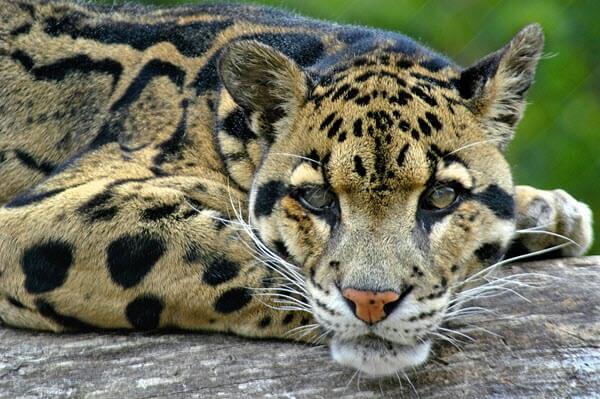
Clouded leopards in culture
Clouded leopards are revered in the Rukai culture. THe Rukai are a group of indigenous people that inhabit Taiwan. They believe that hundreds of years ago the clouded leopard led two human brothers to a heavenly place.
The Paiwan nobility in Taiwan (another indigenous group) are the only individuals in their culture allowed to wear the pelt of a clouded leopard.
Image: Clouded leopards (1825) by Jacquest-Laurent Agasse, a Swiss painter.
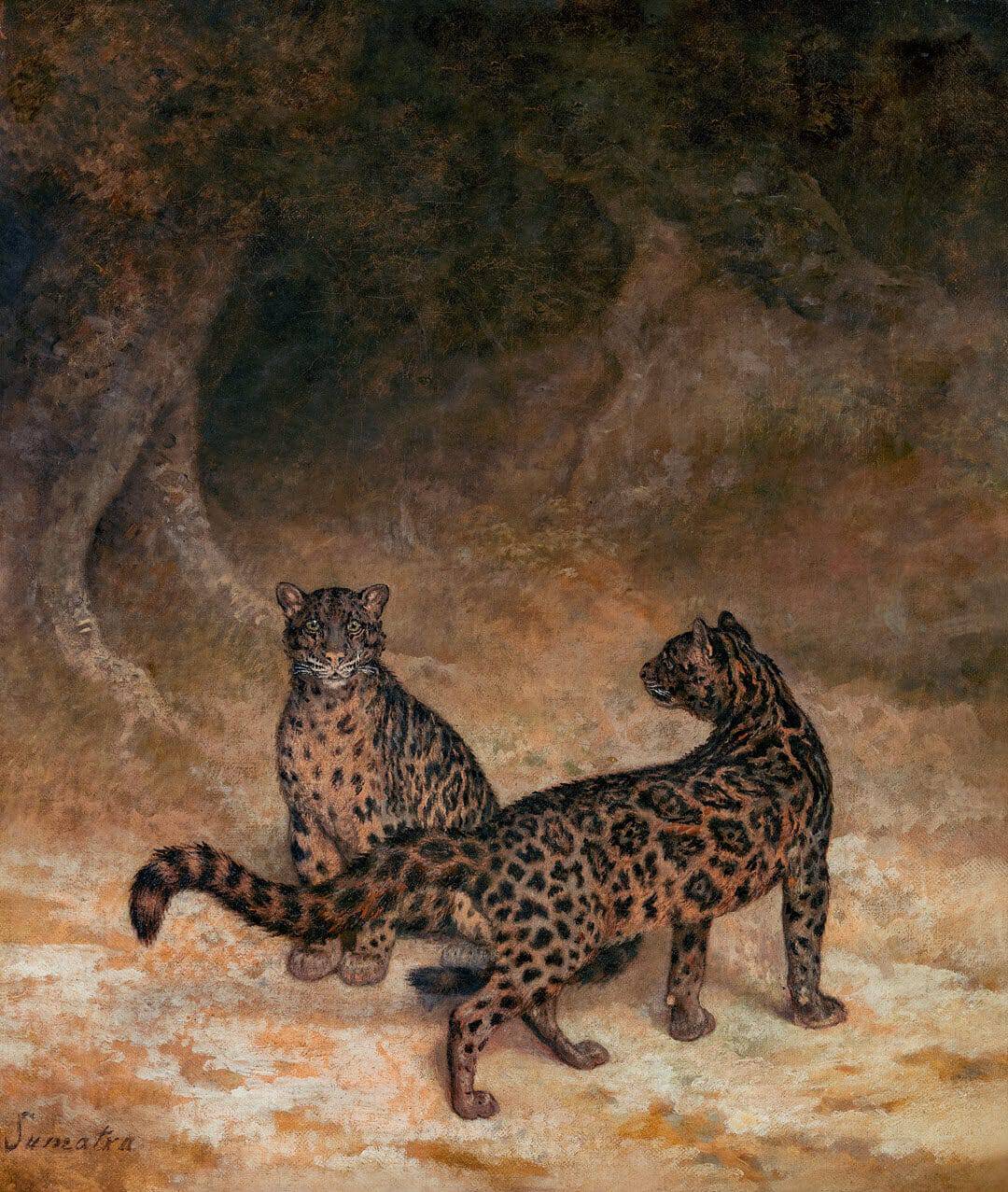

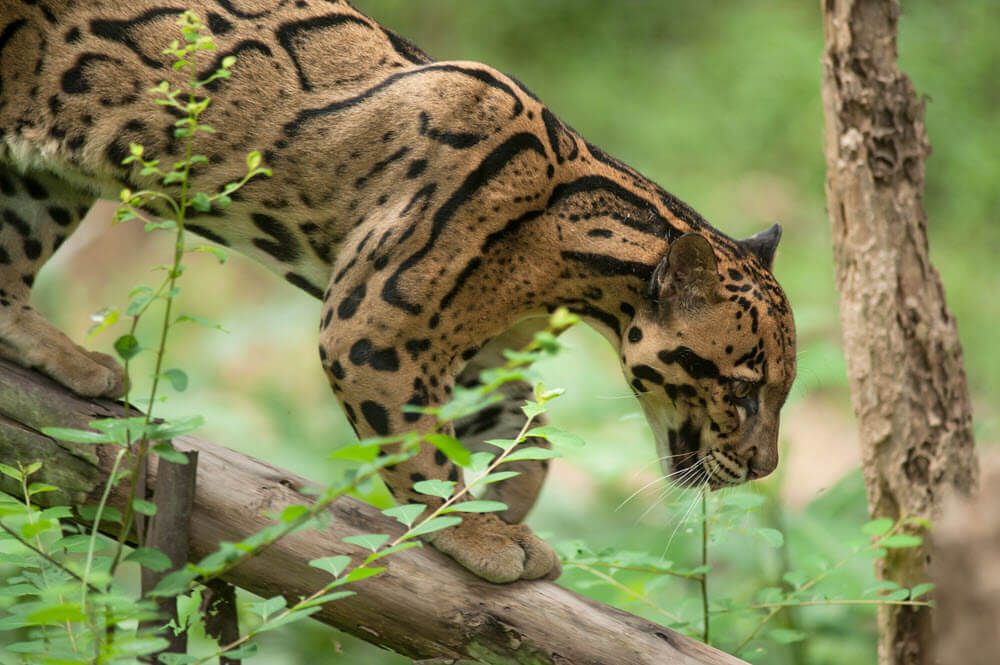
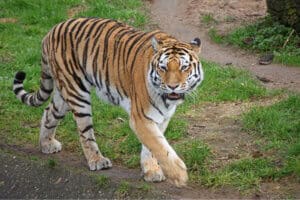
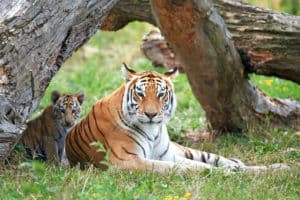
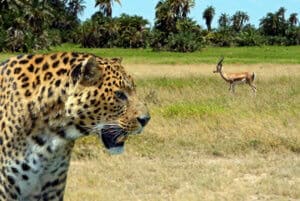

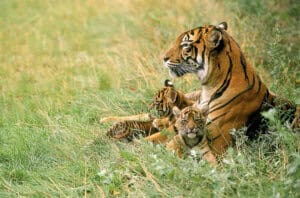
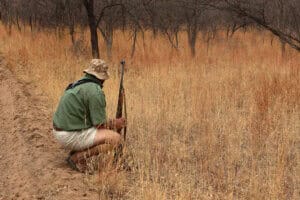
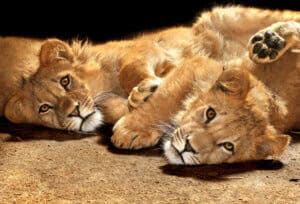
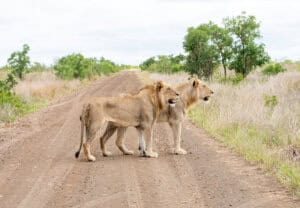
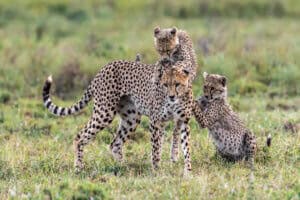


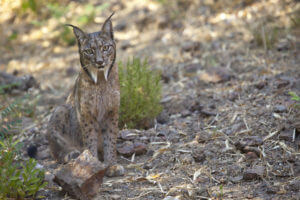




Hi Logan,
Many people who use the term “big cats” are talking about the lion, tiger, leopard and jaguar – big cats that roar. These 4 cats are members of the Pantherinae subfamily and Panthera genus The snow leopard is also a member of the Panthera genus, but it does not roar. Sometimes the term is used to describe the largest wild cats on the planet, which would include the cougar and cheetah. The term can have a more general meaning depending on how it is used. We’ve been updating our pages to further clarify this term and provide even more information about big cat classification and lineage. Thanks for your feedback.
Rebecca
I have to disagree with your classifications. The term “Big Cats” although generic, usually refers to the genus Panthera, family Felidae, which include lions, tigers, leopards, snow leopards and jaguars. The genus Panthera are the only cats with the ability to roar. Cheetahs are in their own genus, Acinonyx, and not closely related to Panthera. Couger are in the genus Puma, both cheetahs and pumas are in the sub-family Felinae, not Felidae, and clouded leopard, although in the family Felidae is in its own genus Neofelis. I don’t know what a panther is since pumas (mountain lions), jaguars, and leopards are routinely called panthers.
me like wild cats :]